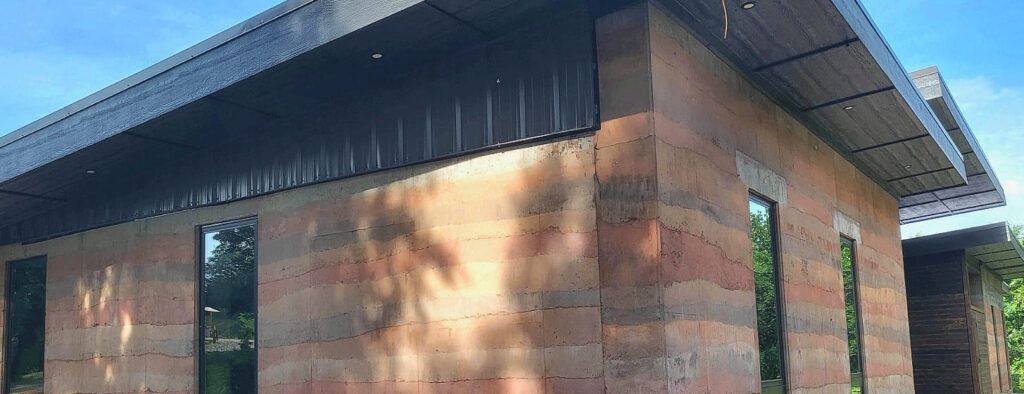In the world of sustainable construction, rammed earth structures have gained significant attention for their unique blend of eco-friendliness, thermal efficiency, and timeless aesthetic appeal. Rammed earth, a building technique dating back centuries, involves compacting layers of damp soil within a formwork to create solid walls. If you’re considering embarking on a rammed earth construction project, it’s crucial to understand the specifications that ensure the success and durability of your venture. In this guide, we’ll delve into essential specifications for rammed earth structures, ranging from R-value and U-value to foundation design, wall thickness, structural properties, joints, and more.

R-value and U-value: Balancing Thermal Performance
Rammed earth structures are renowned for their exceptional thermal mass, which helps regulate indoor temperatures by absorbing and slowly releasing heat. The R-value represents the thermal resistance of a material, while the U-value signifies the rate of heat transfer. Rammed earth’s R-value typically ranges from 0.2 to 0.6 per inch, showcasing its natural insulation properties. However, the U-value depends on various factors such as wall thickness, soil composition, and finishes.
Foundation Design: Ensuring Stability
Sturdy foundations are vital for any construction project, and rammed earth structures are no exception. The type of foundation required depends on factors like soil stability, local climate, and structural loads. Typically, a well-drained, compacted gravel or stone foundation is recommended. Proper drainage systems should also be integrated to prevent moisture accumulation that could compromise the integrity of the structure.
Wall Thickness: Striking a Balance
The thickness of rammed earth walls plays a pivotal role in both structural stability and thermal performance. Generally, walls range from 12 to 24 inches in thickness. Thicker walls provide enhanced thermal mass and strength, but they might not be suitable for every project due to space constraints and material availability. Thinner walls, while sacrificing some thermal mass, can still offer respectable insulation and aesthetic appeal.
Weight Considerations: A Solid Choice
Rammed earth structures are substantial in weight, which contributes to their durability and stability. The mass helps moderate temperature fluctuations by absorbing and releasing heat slowly. However, this weight should be carefully factored into the design, especially when constructing multi-story or larger buildings. Adequate foundation and structural support must be provided to withstand the load.
Structural Properties: From Earth to Architecture
Rammed earth structures boast impressive structural integrity, thanks to the interlocking particles within the compacted soil. The cohesive nature of the material lends itself well to bearing loads, making rammed earth suitable for both load-bearing walls and non-load-bearing infill walls within a frame structure. Engineering expertise is essential to ensure that the design meets safety standards and local building codes.
Joints and Detailing: Focusing on Cohesion
To maintain the structural integrity of rammed earth walls, careful attention must be paid to joints and detailing. Control joints are strategically placed to prevent cracking caused by expansion and contraction due to temperature variations. Additionally, incorporating lintels and other structural elements helps distribute loads evenly and prevent stress concentrations.
Maintenance and Finishes: Enhancing Longevity
While rammed earth structures are inherently durable, proper finishes and maintenance can significantly enhance their longevity. Applying breathable coatings like lime washes or natural plasters helps protect the walls from water infiltration while allowing the material to breathe. Regular inspections and minor repairs are essential to address any signs of wear and tear promptly.
In conclusion, rammed earth structures offer a harmonious blend of sustainable construction, thermal performance, and aesthetic charm. To embark on a successful rammed earth project, understanding the specifications such as R-value, U-value, foundation design, wall thickness, weight considerations, structural properties, joints, and maintenance is crucial.
As you’ve delved into the specifications for crafting exceptional rammed earth structures, you’re now equipped with the knowledge to embark on your own sustainable construction journey. If you’re ready to turn your vision into reality, look no further than GLS Rammed Earth – your trusted partner in creating eco-friendly, durable, and energy-efficient rammed earth buildings.

